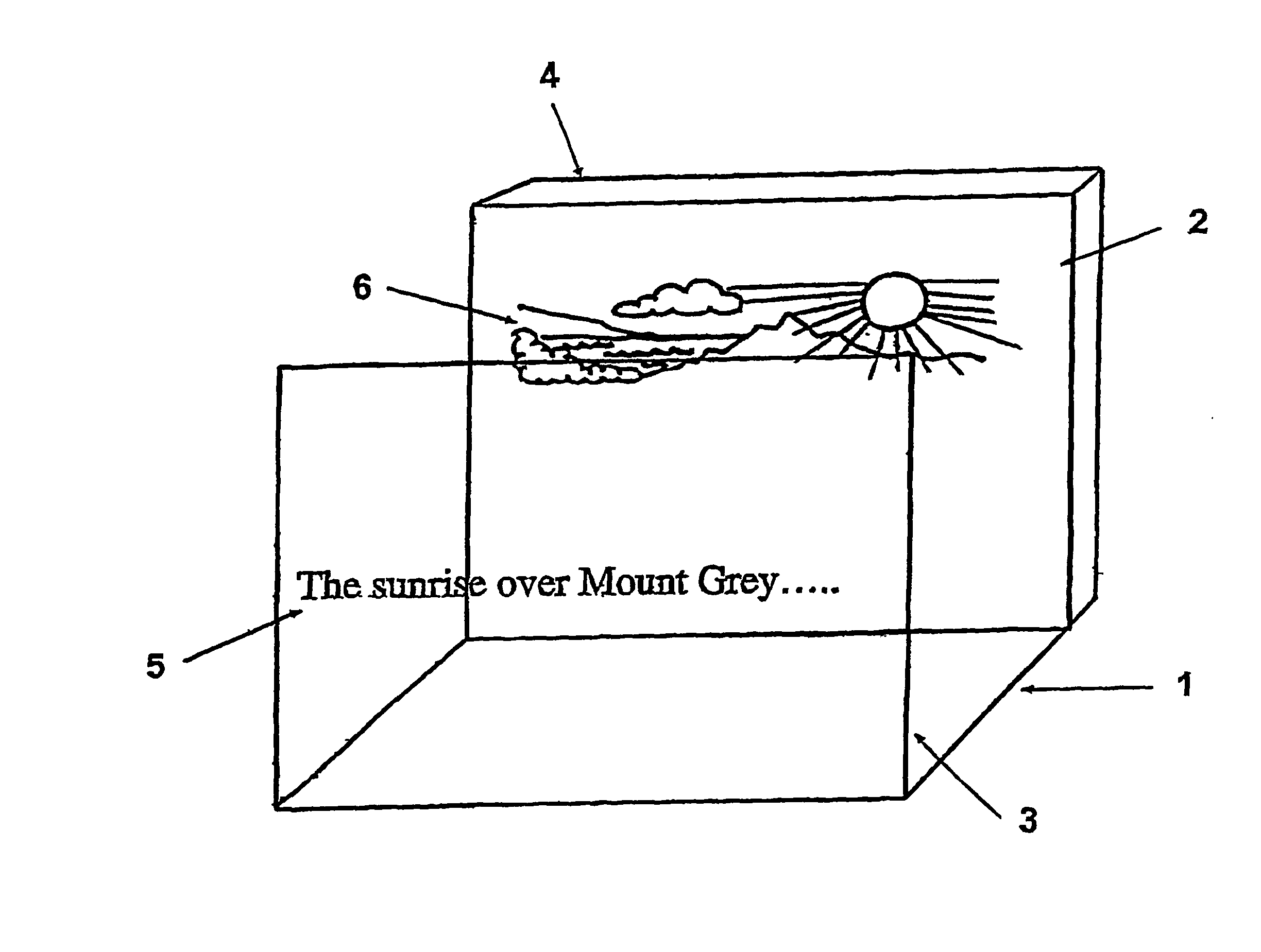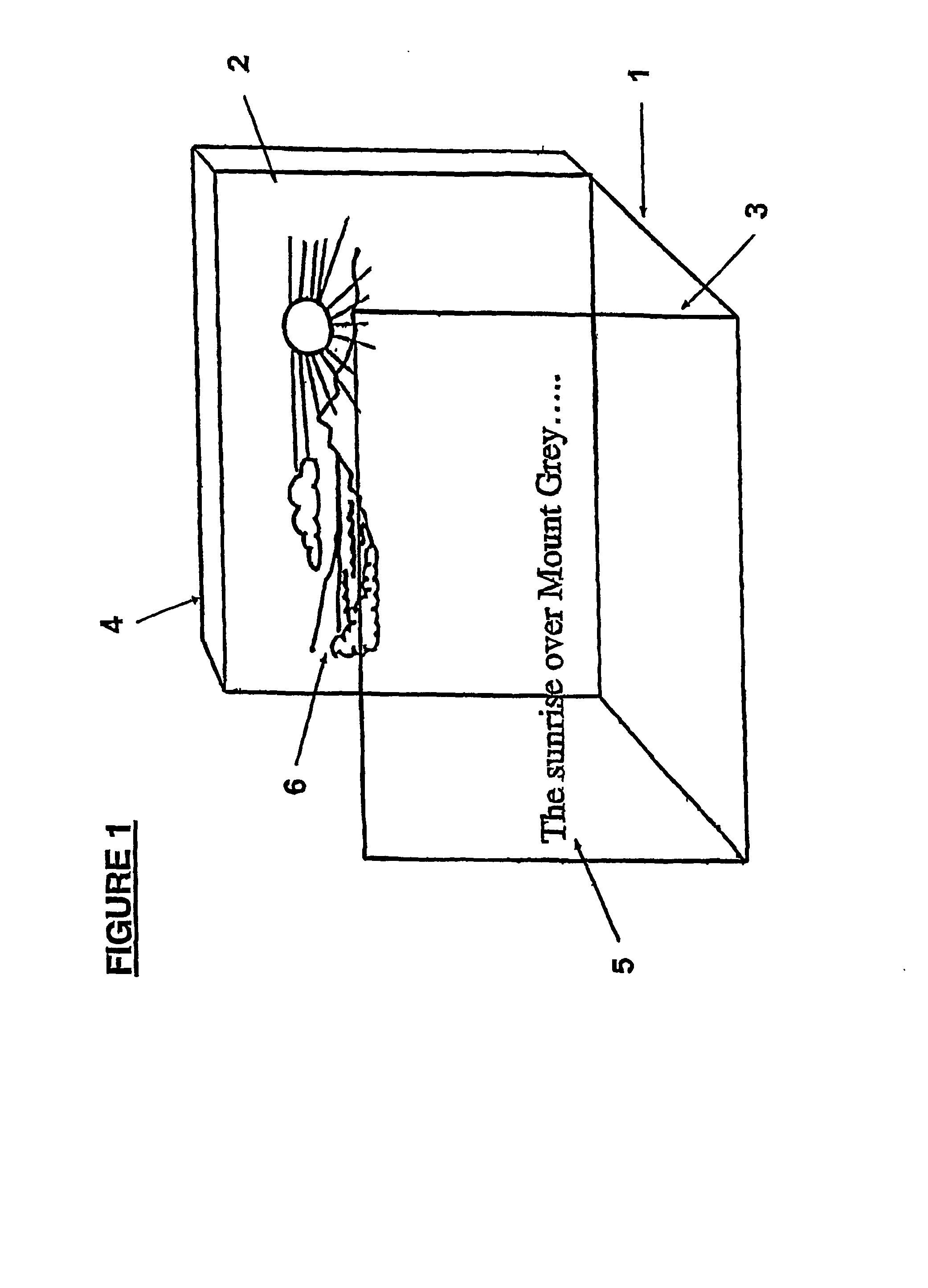Information display
a technology of information display and information, applied in the field of information display, can solve the problems of reducing the situational awareness of the viewer, unable to overcome the inherent limitations of the human eye, and reducing the reader's reading ability, so as to achieve the effect of improving the assimilation of conten
- Summary
- Abstract
- Description
- Claims
- Application Information
AI Technical Summary
Benefits of technology
Problems solved by technology
Method used
Image
Examples
Embodiment Construction
[0073] FIG. 1 shows a multi focal plane display operating in accordance with a preferred embodiment of the present invention. The display indicated by the general reference numeral (1) is preliminary comprised of a background screen (2) orientated parallel with, but spaced apart from a foreground screen (3). In the preferred embodiment shown in FIG. 1, both screens (2, 3) are transparent liquid crystal displays LCD panels though the invention is not necessarily limited to same. A back-light (4) is located behind the rearward screen (2) to provide illumination for the whole display (1).
[0074] The display screens (2, 3) are each capable of displaying either primary (5) or secondary (6) information. FIG. 1 shows primary information (5) displayed on the forward screen (3) and secondary information (6) displayed on the rearward screen (2). It will be appreciated that the converse situation is equally feasible, ie the primary information (5) being displayed on the rearward screen (2) and ...
PUM
| Property | Measurement | Unit |
|---|---|---|
| threshold time | aaaaa | aaaaa |
| response time | aaaaa | aaaaa |
| comprehension speed | aaaaa | aaaaa |
Abstract
Description
Claims
Application Information
 Login to View More
Login to View More - R&D
- Intellectual Property
- Life Sciences
- Materials
- Tech Scout
- Unparalleled Data Quality
- Higher Quality Content
- 60% Fewer Hallucinations
Browse by: Latest US Patents, China's latest patents, Technical Efficacy Thesaurus, Application Domain, Technology Topic, Popular Technical Reports.
© 2025 PatSnap. All rights reserved.Legal|Privacy policy|Modern Slavery Act Transparency Statement|Sitemap|About US| Contact US: help@patsnap.com


